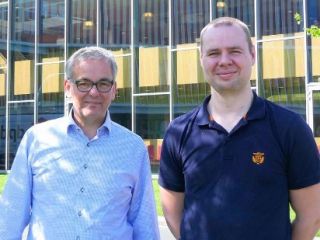How to make healthcare more efficient? A tricky problem that affects us all.
| Date: | 25 July 2017 |

In the coming years, we will experience an increasing demand on our healthcare systems. This is set to be an even more pressing issue due to population growth and longer lifespans. In practice, it means hospitals will have to treat more patients against lower costs. Unless something is done, patients are looking at longer waiting times for treatment.
Hospitals and insurance companies see this wave coming, and have looked to other sectors for possible solutions to be more effective at handling more patients. One of these solutions comes from the auto industry where a process focus aimed at minimal waste increased performance and reduced cost. The idea is that if you can remove wasteful activities from your work process, patients will wait less. This analytical lens is called Lean or the Toyota Production System.
In its most basic sense, Lean is about reducing waste. When applied in healthcare settings, Lean practitioners have looked at processes within an organization and tried to reduce any unnecessary steps. However, this sole focus on waste surprisingly falls short on delivering shorter wait time for patients. There is no simple solution for reducing patient waiting times: hospitals, clinics and insurance companies have been looking into this problem for years. Until now, researchers have focused on making everyone involved work more efficiently.
Our research suggests the answer may lie elsewhere.
To understand how hospitals are different, consider how healthcare differs from the auto industry. In the auto industry, to compensate for bottlenecks in the assembly line, manufacturers build up inventory or increase capacity. However, in the healthcare industry, the “product” is the patient, and thus cannot be stocked.
The problem is uneven demand on the system. In case of excessive demand, patients are waiting; in case of low demand, doctors or care professionals are waiting. We call this variability.
Variability can be natural, or artificial. As you might imagine, natural variability occurs due to non-human factors, such as seasonal rises in influenza. Artificial variability arises due to one’s own actions, such as rules and legislation. This is the kind of variability that we would like to reduce and that should be targeted for improvement.
In our research, we found that it is unclear if Lean initiatives set out to address this variability. We analyzed a large set of different lean interventions, and found that most were directed towards reducing waste. Yet, our findings suggested that interventions that have an impact are focused on variability.
Our suggestion is that patient waiting times require a holistic approach that examines variability, patients and direct waste. One quasi-experiment performed in our recent research showed that just a small investment in knowledge can allow focus to shift towards variability, and towards a more complete approach towards efficiency. In this study, a training session of several hours already seemed to impact intervention focus.
Such an approach may be more vital as pressure on health systems begins to bite.
Kees Ahaus is a Professor at the Faculty of Economics and Business, Martin Land is an Associate Professor, and Oskar Roemeling is an Assistant Professor. For further reading, please see the following research papers:
- Roemeling, O. P. , Land, M. J., Ahaus, K., Slomp, J., & van den Bijllaardt, W. (2017). The Impact of lean interventions on time buffer reduction in a hospital setting. International Journal of Production Research . DOI: 10.1080/00207543.2017.1301687
- Roemeling, O. , Land, M., & Ahaus, C.(2016). Does lean cure variability in health care? International Journal of Operations & Production Management ,37(9).
- Roemeling, O-P. (2016). Lean beyond waste: Towards the reduction of variability and buffers in healthcare [Groningen]: University of Groningen, SOM research school

